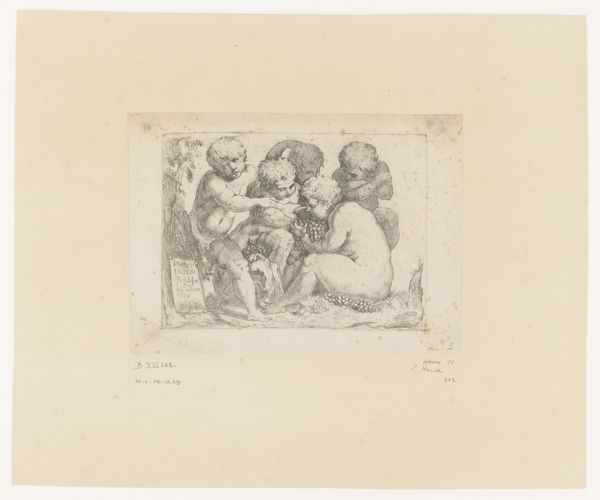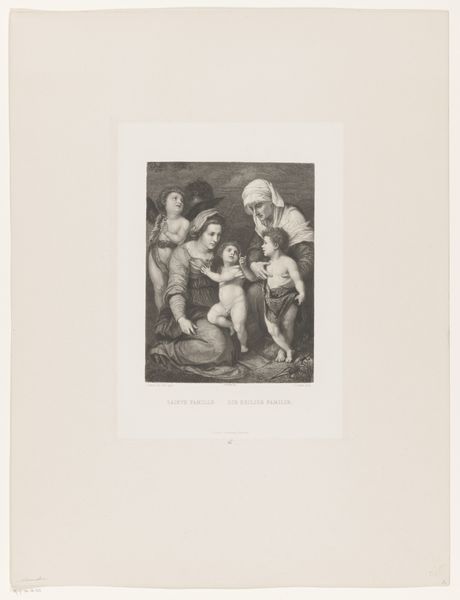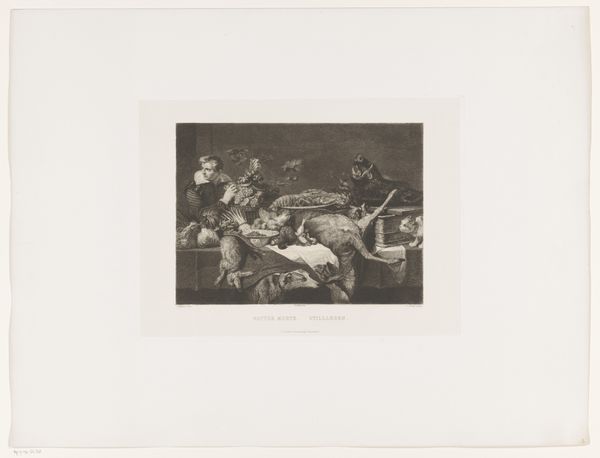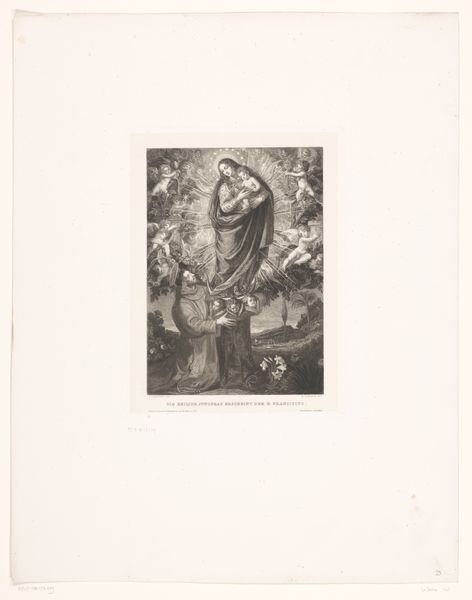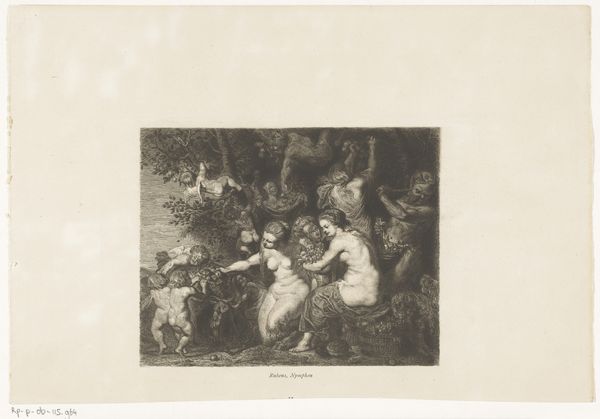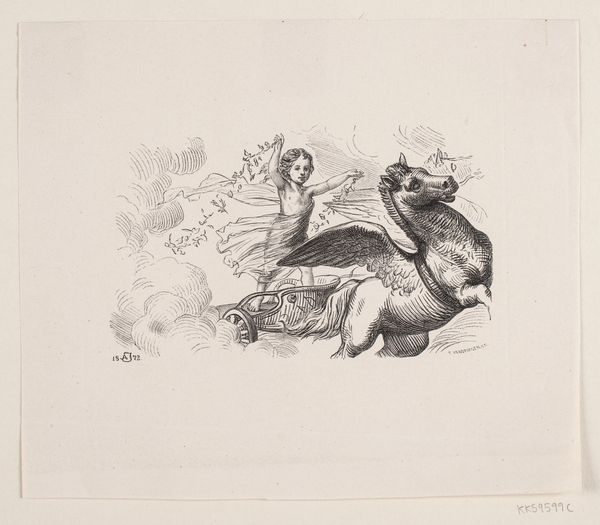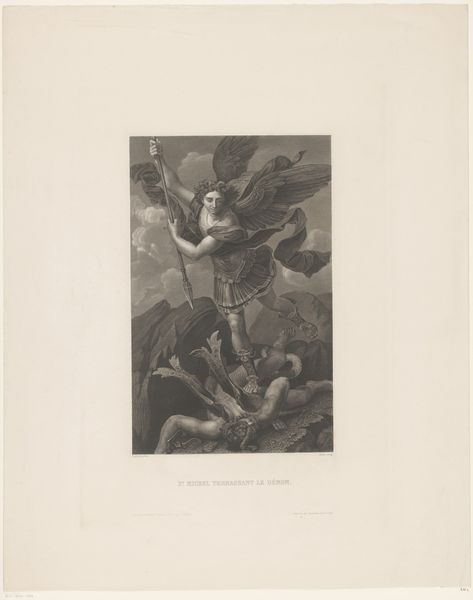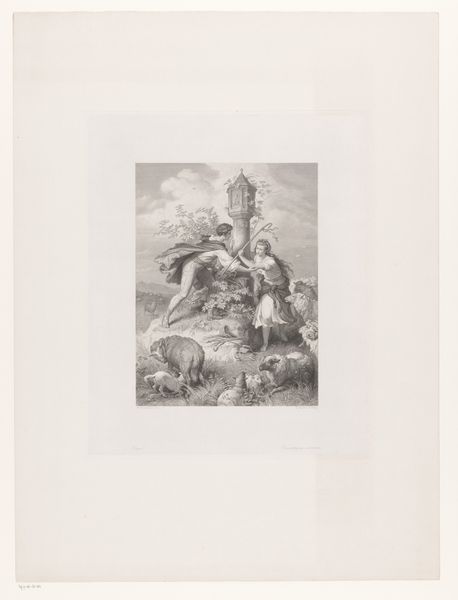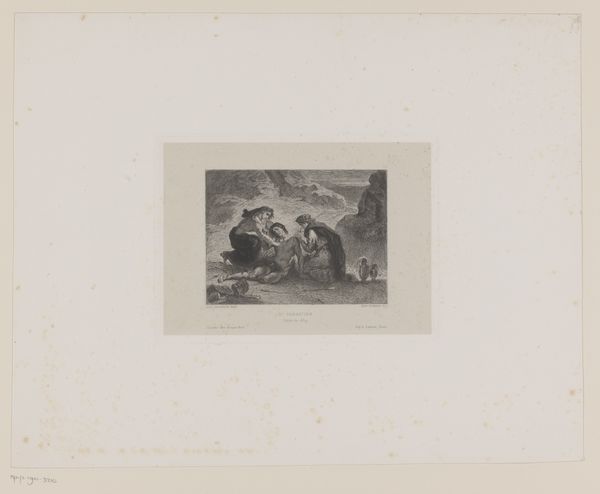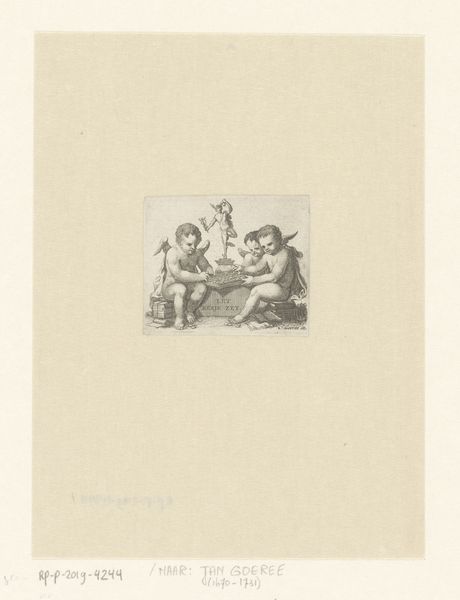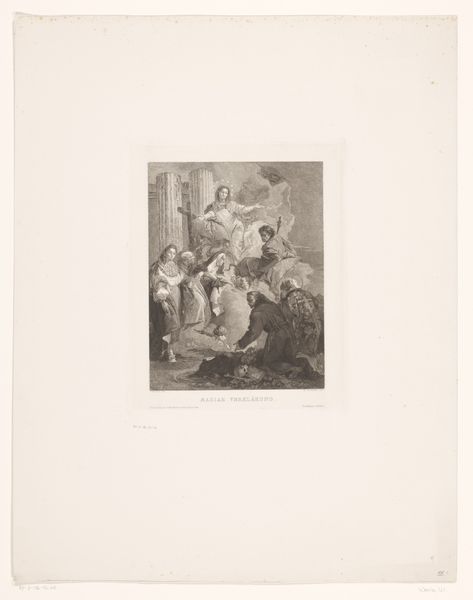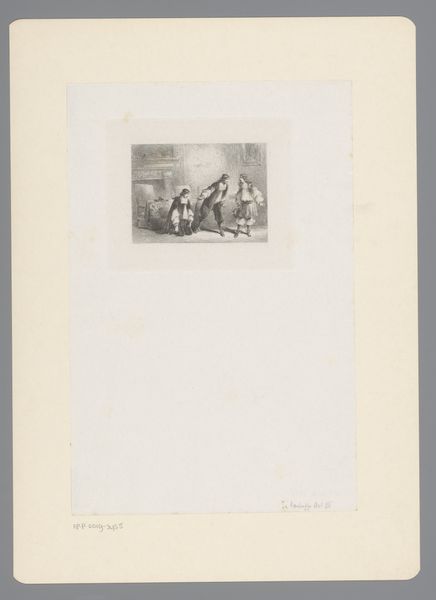
drawing, pencil
#
pencil drawn
#
drawing
#
allegory
#
pencil sketch
#
figuration
#
pencil drawing
#
romanticism
#
pencil
#
pencil work
Dimensions: height 239 mm, width 320 mm
Copyright: Rijks Museum: Open Domain
Hyacinthe Aubry-Lecomte made this lithograph, "Two Putti Spinning," in France during the first half of the 19th century. Putti, or cherubic figures, were a common motif in art since the Renaissance, often associated with love and innocence. Here, however, we see them engaged in labor. During this time, France was experiencing the Industrial Revolution. By depicting putti in this way, Aubry-Lecomte subtly comments on the changing social structures of his time. It is as if he is implying that even the most innocent and carefree are now subject to the demands of industry. Is he critiquing the loss of innocence, or suggesting that no one is exempt from the new economic order? To understand this work better, we might research the economic conditions in France during the early 1800s, or the role of child labor during the Industrial Revolution. Art, after all, is always contingent on its social and institutional context.
Comments
No comments
Be the first to comment and join the conversation on the ultimate creative platform.
